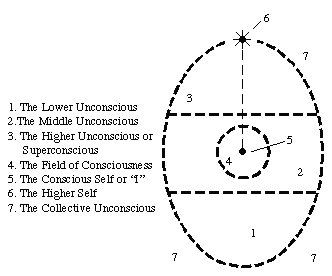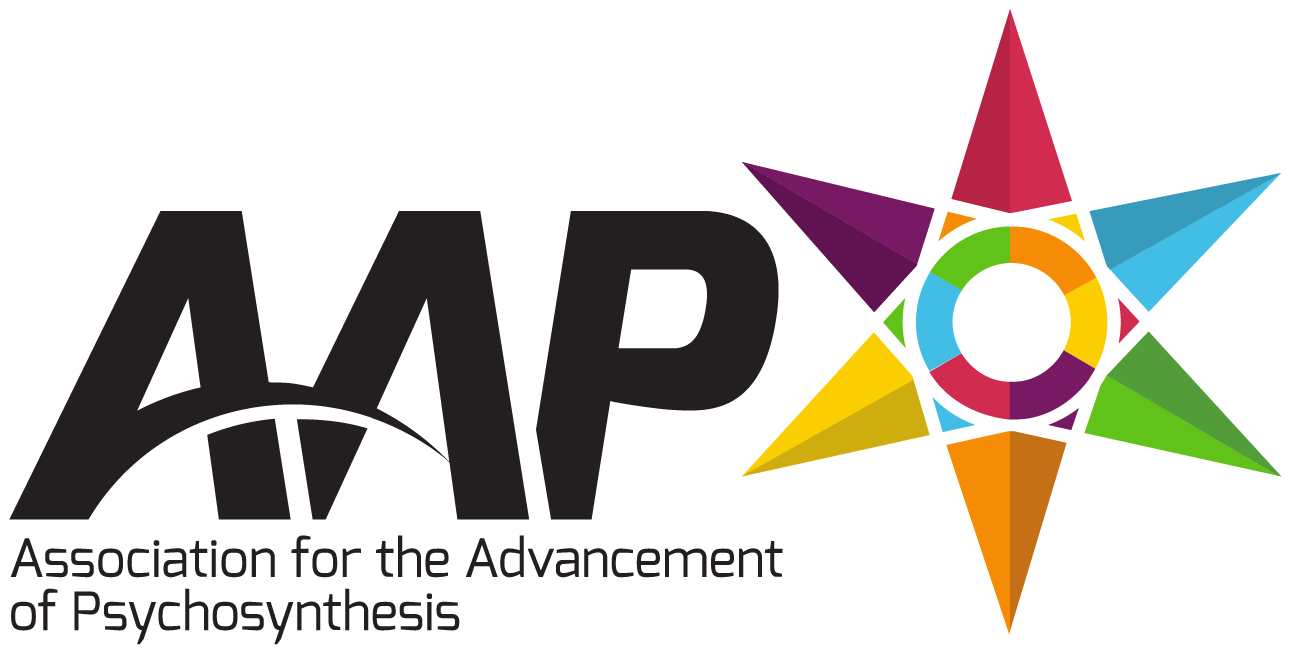What is Psychosynthesis
IntroductionThe Italian
psychiatrist Roberto Assagioli began Psychosynthesis in 1910. Seeing the
need to expand beyond Freud’s analysis and “talking cure”, he added
synthesis and a broader use of our human abilities, such as will,
imagination, and intuition. He included even our spiritual side, our
higher aspirations, and our center, which he called the Self. People use
Psychosynthesis as a way of life – and in a wide variety of fields,
such as education, psychology, business, and spirituality. Whether
student or sage, we all can enhance our development, live a more
centered life, have freer use of will, and enjoy a greater sense of
mutual responsibility and caring. Psychosynthesis offersl tools for many
purposes: embracing opposed parts of our inner worlds, enriching each
other with our differences, making groups and organizations function
with greater purpose, and enjoying a respectful interchange with the
world that envelops us. The main goal of the broad-ranging theory and
methods of Psychosynthesis is to enhance the full range of human
experience and support our movement toward Self-realization. Martha
Crampton further describes psychosynthesis. To read “What is
Psychosynthesis” click here: Martha Crampton – What is Psychosynthesis Assisting Human DevelopmentIn
a basic sense psychosynthesis (little “p”) is simply a name for the
process of human development: the natural tendency to harmonize or
synthesize the various aspects of ourselves at ever higher levels of
organization. We are like the rest of the world and all living things in
that we have within us a drive to grow or evolve, to become fully
realized. Also, Psychosynthesis (big “P”) is a name for our conscious
cooperation with this natural process of development. As such,
Psychosynthesis offers:
Psychosynthesis – Then and NowPsychosynthesis is an inclusive approach to human growth that dates from 1910 and the early work of the Italian Psychiatrist Roberto Assagioli. Assagioli was one of the pioneers of Freud’s psychoanalysis in Italy, but he maintained that Freud had not given sufficient weight to the “higher” aspects of the human personality. Assagioli recognized a need for a more inclusive concept of humanity and a system (which he called Psychosynthesis) that would help humans come together within themselves as well as with each other and their world. From this beginning Assagioli – and an increasing number of psychotherapists, educators, physicians, social workers, clergy, and others – worked to develop and refine this inclusive view of human growth. It is an exciting task that continues today – and will never to be finished. Each year, new discoveries in psychology, new developments in education, religion, anthropology, physics and other disciplines, add to the principles and to the techniques of Psychosynthesis. Psychosynthesis, by its very nature, is always open to new approaches to human development.A Synthesis of Many TraditionsAny comprehensive psychological and educational approach to the development of the whole person must draw from many traditions. Eastern and Western traditions, for example, come together in Psychosynthesis. While Eastern disciplines often have tended to emphasize the spiritual side of being, Western approaches usually have focused on the personality level. Psychosynthesis thinking and skills help us recognize that we have a “transpersonal” essence, something greater than our “ordinary” selves. We know our purpose in life is to use all our parts and powers to manifest this essence, or Self. At the same time, we want to experience this Self as fully as possible in the world of everyday existence – we want to be fully present in our personal and social lives. We humans need to view our humanity as a single whole and accord each aspect its due importance. Over the years, a number of conceptual points and a number of methods have proven themselves to be fundamental. These provide a working structure for Psychosynthesis. Prime examples are Assagioli’s expansive “Oval” diagram (or “Egg” diagram) showing the areas of the psyche, or mind, and his “Star” diagram, a picture of our main psychological capabilities or functions. Stages in PsychosynthesisEvery
person is a distinct individual, and the psychosynthesis of each person
follows a unique path. Still, the overall process of psychosynthesis
can be divided into two stages:
Often the two stages overlap: We can begin our transpersonal awareness and action long before our personal integration is complete. Psychosynthesis MethodsAny method that assists in the evolution of a human being is useful in psychosynthesis. To be as effective as possible in guiding ourselves or others, we clearly need to have a broad range of methods and techniques to meet the needs presented by different situations and people. We treat each person as an individual and choose the methods best suited to each person’s existential situation, psychological type, goals, desires, and path of development. We commonly use a wide range of methods in the process of talking about life events. These methods include guided imagery, movement, gestalt techniques, self-identification, creativity, meditation, will development, symbolic art work, journal keeping, development of intuition, and many more. The emphasis is on fostering our own or our client’s ongoing process of growth in order to experience ever more joy, balance, and actualization in life. Will and Choice: A ComebackAs this process goes on, we gain freedom of choice, the power of decision over our actions, and the ability to direct many of our personality functions. We develop the “personal will,” the will of our personal self. We free ourselves from habits of helplessness. We drop preprogrammed reactions – to our inner impulses or to the expectations of people around us. We become gradually more “centered” and able to follow our own path, guided by our inner knowing, or true Self. As we reach toward experiencing the transpersonal Self, we liberate new strengths: we encourage synthesizing energies that organize and integrate our personality. We make ever-increasing contact with our “transpersonal will,” the Will of our transpersonal Self, which provides clearer and clearer meaning and purpose in our personal lives and our social tasks. We become able to function in the world more serenely and effectively, in a spirit of cooperation and good will. Psychosynthesis is a powerful and effective mode of holistic therapy and is gaining recognition in the psychological and therapeutic world. It is also a positive and dynamic framework from which to view the evolution of our planet. As people use Psychosynthesis principles and techniques effectively in education, medicine, politics and business they are spreading them to a wider audience, developing a broader range of techniques, and discovering greater depth of understanding. The “Star” Diagram: Your Personal Tools
The “Egg” Diagram: Picturing Your Psyche
Assagioli indicated the varying levels of unconscious with dotted lines, illustrating that these states are not rigid: they blend into each other. The same is true for the field of consciousness at the center: we can refocus our awareness from moment to moment. The Self, in this map, describes both the “I”, (a center of awareness and choice operating at the ordinary personality level) and the Higher Self (the center of awareness and choice in touch with the transpersonal dimension – our larger experiencing of others, the universe, and spirit). |
© 2025 - Association for the Advancement of Psychosynthesis - All rights reserved.
Acceptable Use. This Site is intended to provide users with general information. We do not recommend or endorse any specific professionals, tests, products, procedures, opinions, or other information that may be mentioned on the Site. Reliance on any information provided by us, or appearing on Site at our invitation or other visitors to the Site is solely at your own risk.
 Assagioli’s
“Star” diagram shows the relationship our Self has to our personality
and our psychological functions. Psychological functions are the basic
capabilities we rely on for awareness and for taking action – both
internally and in the world. Assagioli’s diagram, with its wide variety
of functions (intuition, imagination, sensation, etc.), makes it clear
how complex – and unique – people are: each of us relies differently on
the various functions, emphasizing some more strongly than others. This
map also points to the variety of ways we have of creating change. We
can use any psychological function and begin a process that changes us
as a whole person. The various techniques in psychosynthesis draw on the
various functions. Assagioli’s “psychological laws pertaining to will
training” explain the processes we use to create change. For instance,
when he states that “images or mental pictures and ideas tend to produce
corresponding physical conditions and external acts” he shows the
creative power of imagery and the mind. This map is a gift in that it
gives a hint of the wholeness and richness of the human being – and of
the certainty that growth is possible.
Assagioli’s
“Star” diagram shows the relationship our Self has to our personality
and our psychological functions. Psychological functions are the basic
capabilities we rely on for awareness and for taking action – both
internally and in the world. Assagioli’s diagram, with its wide variety
of functions (intuition, imagination, sensation, etc.), makes it clear
how complex – and unique – people are: each of us relies differently on
the various functions, emphasizing some more strongly than others. This
map also points to the variety of ways we have of creating change. We
can use any psychological function and begin a process that changes us
as a whole person. The various techniques in psychosynthesis draw on the
various functions. Assagioli’s “psychological laws pertaining to will
training” explain the processes we use to create change. For instance,
when he states that “images or mental pictures and ideas tend to produce
corresponding physical conditions and external acts” he shows the
creative power of imagery and the mind. This map is a gift in that it
gives a hint of the wholeness and richness of the human being – and of
the certainty that growth is possible. Assagioli’s
original “oval” or “egg” diagram offers a view of the human psyche in
its many aspects. We can imagine our minds and knowledge as having
several levels:
Assagioli’s
original “oval” or “egg” diagram offers a view of the human psyche in
its many aspects. We can imagine our minds and knowledge as having
several levels:
